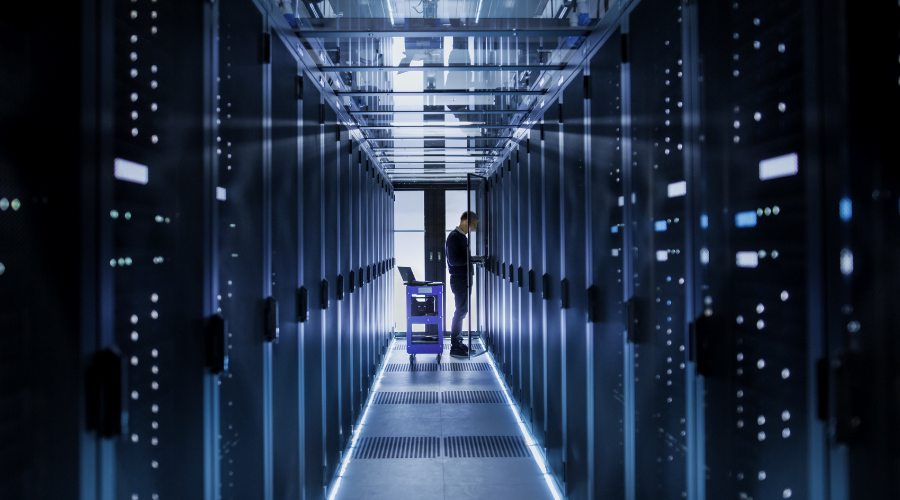How to Maximize Security and Efficiency at Data Centers with Video Analytics

It could be argued that data centers are the most important building or area of a business’ facility. They hold all of a company’s proprietary information, intellectual property, customer data, financial records, and more. Therefore, great care and focus should be placed upon data centers. Protecting data centers while ensuring they are performing at their optimal capacity should be a priority for every company. Using video surveillance to gain valuable insights could be a difference-maker for many businesses.
Enabling Safety and Security within Data Centers
Should something happen to the data center, whether it be bad actors looking to access your information or an unfortunate accident like a fire, it could cost a company thousands of dollars, hundreds of hours of productivity, or even the trust of their customers.
Because data centers contain a company’s most sensitive information, there are likely many physical security measures in place, such a biometrics and key cards. Adding proactive perimeter security is another measure that companies should take to help alert, identify and mitigate potential security issues.
Video surveillance enables a business to be proactive about their security measures.
Facial recognition and license plate recognition technology should be used to recognize visitors with authorized access to the facility. Conversely, facial recognition and license plate recognition technology can identify unauthorized vehicles and visitors, which can help a data center identify whether physical security has been breached in real-time. Perimeter security with real-time alerting can track a vehicle or individual across multiple cameras from the time they enter the property and all throughout the facility. This type of surveillance helps a business identify people who should not be on-site, and therefore enables them to quickly take appropriate action to remove them from the building.
As access to data centers is typically limited, an employee could find themselves in a lone worker scenario. Lone workers are a security risk because they are usually not able to receive immediate support from colleagues as they are in isolated areas. This is an issue because data centers contain the company’s most sensitive information and having one employee managing or protecting the data center alone could expose them to security vulnerabilities. If an unauthorized person accesses the data center and tries to coerce the lone worker into giving them information, the lone worker has limited options in accessing backup security and support. By using video tools like heat maps, the business can proactively identify and therefore prevent lone worker scenarios by staffing accordingly, thereby reducing their security risk.
This type of proactive security alerting within the facility and the cages where the data center’s servers are located themselves could also help the business identify different types of incidents like, outages, equipment overheating, and more and take action to either remedy or mitigate.
Optimizing Operational Efficiency
Undoubtedly, video analysis is extremely helpful to data centers when it comes to security, however it can be just as useful at optimizing the operations within the facility as well — particularly cleaning, staffing and safety.
Traffic analysis software should be used by data centers to optimize security and operational staffing. Most businesses have established routine cleaning and maintenance schedules. Using traffic analysis software can help the business optimize cleaning and maintenance based actual usage, not just a set schedule. In doing so, the business can staff accordingly and reduce their payroll costs.
Video analysis can be used to understand where, when and for how long colleagues spend their time in their facilities. These trends should be used to inform where staff is needed and beyond that, what type of security is needed at what time to keep that staff safe. Additionally, this type of software will help the business establish a baseline for normal activity; this is helpful in identifying unexpected traffic which may indicate a security issue that needs further investigation.
Lastly, in the age of COVID-19, public health and safety is of particular concern. Video analysis can be used to understand on-site social distancing trends, contact trace colleagues who came in close proximity to any individuals who tested positive for the virus as well as monitor on-site mask wearing compliance. Understanding these trends could be key to enhancing or revising a site’s health and safety protocols and making decisions based on the site’s needs rather than blanket one-size-fits-all policies.